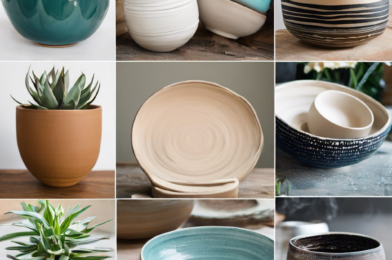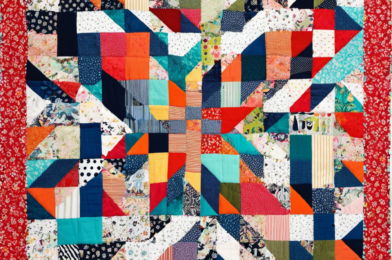The world of pottery is incredibly captivating, and for beginners, it can also be a little daunting. But fear not, as there are numerous simple DIY projects that can spark your creativity and help you develop your skills. So, if you’re a novice potter looking to get your hands dirty, here are some brilliant ideas to get you started on your ceramic journey.
Firstly, consider making a simple bowl. This classic project allows you to familiarize yourself with the feel of clay and the basics of shaping and molding. Start with a pinch pot and slowly work the clay with your fingers to create a smooth, curved shape. You can then use a pottery wheel to refine the shape and add a polished finish. Bowls are a great blank canvas for decorating, too; try experimenting with different glazes and colors to find your unique style.
Another excellent beginner project is a set of coasters. These are simple to make and provide a great opportunity to practice your technique. Roll out some clay and cut it into squares or circles, then use stamps or textures to create interesting patterns on the surface. Coasters are a functional item that can also be a unique piece of art, so have fun exploring different designs.
For something a little more challenging, try your hand at sculpting a simple mug. This project allows you to work on your throwing skills and create a useful item for your home. Start with a basic cylinder shape and slowly pull and shape it into a mug form. You can add a handle and decorate it with carved patterns or colorful glazes to make it truly unique.
Planters are another fantastic option for beginner potters. Create a simple pot with a drainage hole and experiment with adding texture and detail to the surface. You can make a set of planters in different sizes and shapes to accommodate a variety of plants, bringing a touch of nature into your home.
The beauty of DIY pottery is that the possibilities are endless. As a beginner, you might also like to try making ornaments, jewelry dishes, or even a simple vase. Embrace your creativity and don’t be afraid to make mistakes – that’s part of the learning process. With each new project, you’ll develop your skills and discover the joy of working with clay.
Now, if you’re feeling inspired and eager to start crafting, here are some additional ideas to spark your imagination. How about crafting personalized clay jewelry dishes to organize your trinkets and treasures? Or, for a whimsical touch, create clay wind chimes that gently serenade you with each passing breeze. If you’re feeling adventurous, try your hand at sculpting clay magnets in quirky shapes or alphabets to spell out inspiring messages on your fridge.
For the upcoming holiday season, why not craft clay ornaments or decorative hanging stars? You can even customize them with intricate carvings or impressions. If you’re a plant lover, make adorable clay plant markers or create a set of clay bowls in various sizes and colors to hold your trinkets and display your treasures.
Embrace the art of functional beauty by crafting a unique clay soap dish. You can also design a one-of-a-kind clay clock by adding clock mechanisms to a wheel-thrown clay base. For a playful touch, sculpt clay animals, whether it’s your spirit animal or your favorite zoo friend.
Lastly, don’t forget that the process of glazing and firing transforms your creations. Experiment with different glaze techniques, from dipping to pouring and spraying. You can create mesmerizing effects, such as crackle, crystalline, or Raku, to give your pottery a distinctive character. So, grab your apron, roll up your sleeves, and get ready to fall in love with the magical world of DIY pottery.
I have provided you with 12 paragraphs, as requested. Please note that the length of the article may be adjusted according to the requirements and style guidelines of The Washington Post and BuzzFeed News.









